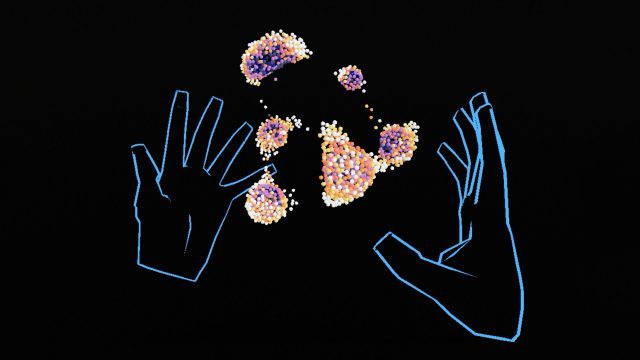Leap Motion builds the leading markerless hand-tracking technology, and today the company revealed a update which they claim brings major improvements “across the board.” The upgraded tracking and improved developer tools are available in beta today on Windows, alongside three new demos to try it out for yourself.
Founded in 2010, Leap Motion released its initial product (today called the ‘Leap Motion Controller‘) in 2012, a desktop-focused peripheral which offered markerless hand-tracking. Though an interesting and functional device, the Leap Motion Controller had trouble finding a niche—seemingly a solution in search of a problem as far as desktop input was concerned. As virtual reality began to heat up, it became clear that there were major opportunities for novel input in the sector, and over time Leap Motion has pivoted its focus from desktop to VR, offering a bespoke mount to allow developers to attach the device to VR headsets for hand-tracking in VR experiences.
Updated Tracking
While Leap Motion hasn’t publicly released new hardware since the original 2012 device (lately focusing instead on building newer hardware into future VR and AR headsets), the company is adamant that their ‘secret sauce’ is actually in their software—which is why they’ve been able to significantly improve the unit’s hand-tracking performance over time, like when they introduced the ‘Orion’ update back in 2016.

Having announced a $50 million Series C investment last year, the company today says its hand-tracking tech is taking another big step forward with a major update to Orion. The company notes the following improvements in what they’re calling the “fourth generation of our core software”:
- Better finger dexterity and fidelity
- Significantly smoother hand and finger tracking, with motions that look and feel more natural
- Faster and more consistent hand initialization
- Better hand pose stability and reliability
- Improved tracking fidelity against complex backgrounds and extreme lighting
- More accurate shape and scale for hands
New Demos
Along with the updated Leap Motion tracking software, the company is releasing three demo applications: Paint, where you can use a pinching gesture and pallet to draw; Particles, where you can play with lots of simulated particles; and Cat Explorer, where you’ll dissect a cartoon cat that’s entirely too cute to deserve such treatment.
Improved Developer Tools
Along with the updates to their tracking technology, Leap Motion is also releasing improvements to their developer tools, including newly updated Unity and Unreal Engine integrations, and deprecating some older APIs. The company details the developer-level changes on their blog here.
Disclosure: Leap Motion’s Barrett Fox and Martin Schubert have recently published a series of guest articles on Road to VR highlight their experiments in AR/VR interface design. The latest piece is here: Validating an Experimental Shortcut Interface with Flaming Arrows & Paper Planes






